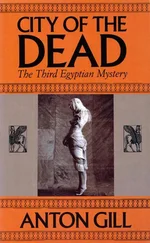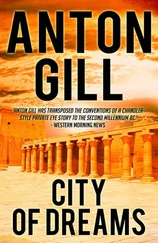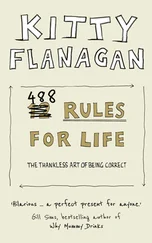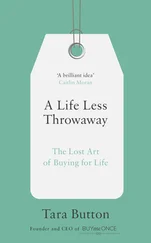But the business was going downhill, and he could see no way of turning it round. He’d never been a businessman, any more than he’d been an enthusiastic student – though the family never failed to remind him that he was the first of the first-generation American Guggenheims to go to university. The failure of his business was worse than the failure of his marriage. Excluded from the family concern, how could he ignore the vast strides that it had made since he’d left at the turn of the century, drawing a modest $250,000 a year from his then-existing interests? Now, in April 1912, he’d decided to return to the States. It would be Hazel’s ninth birthday on the thirtieth. He’d be home for that. And he might drum up some extra capital once home, too, though asking his brothers for a loan would be a long shot, and his wife’s money was too tied up for him to reach, even if he’d had the courage to ask for it. At least no one in the family but himself knew how bad things were. Mismanaged capital, shaky investments and an extravagant lifestyle were to blame.
He’d married Florette on 24 October 1894. She was twenty-four, he was twenty-nine. He’d played the field beforehand, and he was handsome enough to have attracted a better-looking partner; but she was a Seligman, and therefore, though her family looked down on his, a real catch. The Seligmans didn’t have the kind of money the Guggenheims had, but they had the New York cachet the Guggenheims needed, and at that time Ben was still a paid-up member of the family.
Since the birth of his youngest daughter, Ben had spent more and more time in France, looking after his business interests and several mistresses. He’d hardly seen his children in the past year, and not at all in the last eight months, though a letter survives from him to Hazel, written from Paris in early April 1911, which testifies to the affection he had for them. It also indicates that he wanted to see his wife again, though its tone is more dutiful than sincere:
Have just received your letter, am sorry it takes so long for the doll to get through the custom house but when he does reach you I am sure you will like him. We had quite a lot of snow and cold weather yesterday so you see that even in Paris we sometimes are disappointed. However it is again pleasant today and I think we will soon see the leaves on the trees. Tell Peggy I have just rec’d her letter of the 30th Mch but as I just wrote her yesterday I shall not write again today. Tell her also I was very glad to receive this her [?]kind letter and hope that she and you will frequently find time to write me. I am writing Mummie asking if she wants me to rent a beautiful country place at Saint Cloud near Paris. If we take it she can invite Lucille and [?]Doby, and can remove there for July.
With much love from your
Papa
He missed his children, especially the younger two, who adored him and were rivals for his affections. His oldest, Benita, named for him, was almost seventeen – already a young woman, self-possessed, a little cool, beautiful, unlike her mother, but showing signs of wanting nothing more than the moneyed, inactive life of bridge, tea-parties and gossip that Florette enjoyed. Ben was well aware that Florette regarded him as a loser. She had her own means, but she liked money, and she liked acquiring it more than spending it.
What a pity they hadn’t produced a son. But that was something the Guggenheim clan was seldom capable of.
The closest Ben had to a son was his nephew Harry, one of the five boys the seven brothers had managed to produce to carry the family name forward – though Ben’s sisters also had sons. Ben had had lunch with Harry in Paris on 9 April, shortly before leaving for Cherbourg to pick up his ship for the States. Harry was a shade strait-laced already at twenty-two, but Ben talked to him about his business affairs, playing down his difficulties; Harry’s father was Daniel, the most dominant, though by no means the richest, of Ben’s brothers. Ben steered clear of personal observations. A few years earlier, when Harry was fourteen or fifteen, Ben had got into hot water by offering him this piece of advice: ‘Never make love to a woman before breakfast for two reasons. One, it’s wearing. Two, in the course of the day you may meet somebody you like better.’
Shortly before the meeting with Harry, Ben had a problem to deal with. The ship he was booked on, with his chauffeur, René Pernot, and his secretary-valet, Victor Giglio, was suddenly unable to sail, owing to an unofficial strike over pay by her stokers. Ben was one of a number of irritated passengers who were forced to find alternative berths, but after a number of wires to London, New York and Southampton, luck appeared to favour him. He managed to get two first-class cabins, for his valet and himself, and a second-class berth for his chauffeur, on the White Star Line’s new flagship, RMS Titanic , which was making her maiden voyage, stopping at Cherbourg on the evening of 10 April, en route from Southampton to New York via the French port, and Queenstown (now Cóbh) in Ireland. It wasn’t cheap – the first-class cabins cost $1520 each one-way – but the ship was very fast, at the cutting edge of technology and, in first class at least, the last word in elegance. Ben, used to the good things in life even in adversity, was pleased that the switch had had to be made. And when he looked at the passenger list and saw in what august company he’d be travelling, he wondered whether the manner of his crossing the Atlantic might send a message to his brothers that he was doing better than he actually was.
Ben was the fifth of seven brothers. Only William, the youngest, might have been sympathetic, but William had cut loose from the family firm at the same time as Ben, and while he shared Ben’s love of the good life, he was a self-absorbed young man. Like Ben, he had become a ‘poor’ Guggenheim. Each of the two brothers had given up a capital interest of $8 million when they’d left the business – something else Ben had kept secret from his wife.
Nevertheless, as he settled into his cabin on B deck, Ben could reflect that ‘poor’ was a relative term. He still had plenty of money by most people’s standards, and his older brothers, as far as he could see, had yet to make serious money themselves. In his forty-seventh year, Ben still had time to turn his fortunes round.
But it was not to be. We don’t know where Ben was at 11.40 p.m. on the night of 14 April, but the chances are that he had already retired to his cabin. Wherever he was, he would have felt the faint, grinding jar that came from the bowels of the ship at that moment. He may well have seen the iceberg as it glided past. But like most on board, he did not feel any concern. After all, the Titanic was supposed to be unsinkable. Relying on this, and ignoring ice warnings which had come from other ships in the area throughout the day, the captain, Edward J. Smith, a veteran sailor making his last voyage before retirement, had continued to sail virtually at full speed. Egged on by J. Bruce Ismay, White Star’s president, he was attempting to set a new transatlantic record.
At about midnight, by then joined by Giglio, Guggenheim was being helped into a lifejacket by the steward in charge of that set of eight or nine cabins. Henry Samuel Etches urged Guggenheim against the latter’s protests to pull a heavy sweater over the lifejacket (few aboard, cocooned from the elements in the well-heated, brilliantly-lit liner, had any idea of how cold the North Atlantic was), and sent him and his valet on deck. As first-class passengers, their places in lifeboats were assured. However, in the next hour or so, as confusion mounted and it became clear that women and children might be left aboard the sinking ship as the inadequate (and in the event woefully underfilled) lifeboats began to be cast off, Benjamin Guggenheim and Victor Giglio did a stylish and brave thing: they returned to their cabins, changed into evening dress, and then set about helping women and children into the boats. Ben is reported to have said, ‘We’ve dressed in our best, and are prepared to go down like gentlemen.’
Читать дальше












